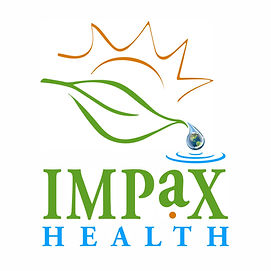By Arlene R. Taylor, PhD Brain Function Specialist
PFAS Problems & Prevention—Q&A
©Arlene R. Taylor, PhD

Q: What does PFAS stand for?
Since the 1940’s, manufacturers have used synthetic chemicals known as PFAS. That stands for per-and polyfluoroalkyl substances. Composed of molecules containing chains of carbon covered with fluorine atoms, they form one of the strongest known chemical bonds on Planet Earth. PFAS chemicals are
exceptionally durable, which makes them useful for a wide variety of products. They repel fire, water, and oil, and are designed to withstand heat, grease, water, and stains.
Q: Why are these chemicals called “toxic forever chemicals?”
All of the PFAS chemicals studied have been found to be harmful to the human body. They are environmentally persistent. Their strong chemical bonds make them extremely resistant to degradation or destruction. They can remain in the environment in water, ground water, wastewater, soil, and landfill for hundreds of years—for years and years in a human body.
Q: What is the big deal about PFAS chemicals?
PFAS chemicals are more problematic than originally believed. Current estimates are that between 9,000-12,000 are in a plethora of products used on Planet Earth. They can contaminate water supplies, including drinking water .In 2020, the environmental working group (EWG), a nonprofit organization, tested major water supplies across the country. In one study, they reportedly found PFAS in all samples except for one. They have identified 41,828 industrial and municipal sites in the U.S. that are known or suspected of using PFAS. The big deal is that PFAS chemicals are bio-accumulative—meaning they can build up in the human body with repeated exposure, often being absorbed faster than the body can eliminate them, if at all.
Q: In addition to water, what else might contain PFAS?
It’s used extensively in fire-fighting foam, which then gets into waste water supply, that eventually can find its way into streams, rivers, lakes, and drinking water. PFAS coatings are used in a variety of products. These include clothing, furniture, adhesives, food packaging, heat-resistant non-stick cooking surfaces, and the insulation of electrical wire. You may absorb them in food prepared in some nonstick cookware. They are reported to be found in fast-food wrappers, pizza boxes, stain-resistant materials, pesticides, water-proof candy wrappers, microwave popcorn bags, clothing, some upholstery products, and the list goes on.
Q: What makes PFAS so chemicals harmful?
Several things. They are ubiquitous—commonly occurring—on planet Earth. They have been linked to a variety of health problems and can contribute to them even when individuals are exposed to barely detectable amounts of PFAS. Studies have shown PFAS can lead to a higher risk for kidney cancer, testicular cancer, increased cholesterol levels, damage to the liver due
Q: Exposure can include more than ingesting PFAS, right?
Definitely. Exposure can occur by breathing the chemicals in from the air if a person works with or around PFAS (e.g., manufacturing chemicals or using fire-fighting foam), or by using products that contain P
FAS. They can be absorbed through the skin from treated clothing, furniture upholstery, and skin products including sunscreens, eye makeup, nail polish, treated dental floss, shampoo, and many others. A recent peer-reviewed study found elevated levels of organic fluorine, an indicator of PFAS, in more than half of 231 makeup and personal care samples. You may have heard that the cosmetic maker CoverGirl was recently hit with a lawsuit that alleged PFAS were found in makeup products the company labels as “sustainable.”
Q: Can PFAS be removed from drinking water?
Reportedly, the EPA is investigating machines and processes that can remove PFAS from drinking water supplies. A 2021 study led by Johns Hopkins researchers found 39out of 100 bottled waters tested contained PFAS. Avoiding water bottled in plastic may help on a personal level. I carry a supply of purified water with me in my car in stainless steel or glass bottles.
Q: Are small machines available for consumers and, if so, do you use one?
Yes, small water purification machines are available. My understanding is that the EPA, CDC, and Environmental Science have made recommendations for removing PFAS from drinking water. According to the manufacturer (KYK) of the ION Thrive machines, they meet or exceed the recommendations made by these three organizations for removing PFAS from drinking and cooking water. There may be others. My nonprofit corporation prohibits me from endorsing products. However, I can tell you that the more I learn about PFAS, the happier I am to use an ION Thrive machine.
Q: You cannot prevent everything, so what to do?
Although it is impossible to prevent all exposure to every harmful person, place, thing, or illness on Planet Earth, you can avoid some of them altogether and minimize exposure to others. The inoculum level is a term used in epidemiology referring to the amount of something to which you are exposed. The higher the inoculum level of a virus or bacteria, the higher your risk of becoming ill. The higher your level of exposure to PFAS the higher your risk of experiencing negative consequences. This is no time for anxiety, worry, and fear, however. Every strategy you embrace helps reduce the inoculum level of PFAS. Cumulatively, that all adds up toward prevention. Filter your water! It's the ONLY way to remove these forever toxins.


Opmerkingen